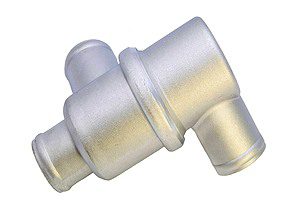
Pressure relief valve operation and use

If many of us are familiar with the turbo relief valve, called Wastegate in English (more details here), it is obvious that the pressure relief valve is less well known ... Why? Well, because we French are so addicted to diesel that we forget about it. Indeed, this relief valve is only used when we have a throttle body to allow the throttle, as is the case with gasoline (as well as diesels, to control the EGR valve, among other things). Check out the difference between gasoline and diesel here. Unlike the known safety valve, the latter is located on the inlet side.
So, if we recall, we have an exhaust valve on the exhaust side, whether on gasoline or diesel, and another on the intake when it is a gasoline engine. Both share the same principle, but we'll still call them different names to differentiate them: Wastegate for the exhaust and Dump Valve for the intake. So, know that the Wastegate allows you to increase the engine power (if we increase the air inlet pressure), while the dump valve is limited only to protect the turbocharger.

The exhaust is used to rotate the turbocharger more or less rapidly (by capturing more or less exhaust gases) and therefore to supply more or less air to the intake port: the more the amount, the more the intake air increases. pressure (compressed in the inlet). Thus, the exhaust gases rotate the turbine, but if we extract some of these gases to get rid of them, then the turbine will run slower (because this time we are using some of the exhaust, not all). When the engine goes into a safe state, the Wastegate is fully open, then we have an almost naturally aspirated engine and therefore we lose the boost. Those who do not understand anything should look at the turbocharger from the side: here you can see a diagram of its operation.
On the other hand, the valve present on the intake, known by the Dump Valve, does the same thing, but on the intake side. In the case of a gasoline engine with a throttle valve, it is necessary to prevent the flow of air through the turbine when it is closed, in order to prevent the throttle valve from breaking, which then receives a strong air flow (it would be a shame to have parts in the engine ... A little as some BMW owners knew who had broken plastic valves , but that's another story)! Worse, the compressed air makes a turn in the direction of the turbo turbine ... And the latter can very badly survive the fact of air pulsation, which he immediately sees returning. It's a bit like meeting two fans face to face: it's bad for the blades if the wind is strong.
Deceleration phase
Assembly that discharges air to the outside
Drain valve noise? Two montages?
Ultimate Turbo Flutter and Valve Actuation Sounds (Bwaaahh Stutututu)
This intake side bypass valve has the typical sound we know from movies like Fast & Furious. And if in France they are quite rare to be found on the street, then the Canadian youth (who only tinkers with gasoline engines) loves such toys, so they are not uncommon there - low.
Air inlet return assembly
However, there is no noise when the air returns to the inlet, passing through the throttle valve: thus, a bridge formed by the pressure relief valve is created. It would also reduce the turbo lag on re-acceleration, because by releasing the compressed air inlet, you then have to put the whole thing under pressure when you turn the throttle back on.
All comments and reactions
Dernier comment posted:
vbes83 (Date: 2021, 04:23:15)
hello if i follow you well it is better to blow compressed air through the relief valve than have funnel noise
Il I. 1 reaction (s) to this comment:
- Administrator SITE ADMINISTRATOR (2021-04-24 11:02:46): Сверху?
Noise doesn't mean there is a problem, why bother so much?
(Your post will be visible under the comment after verification)
Write a comment
What do you think about the evolution of vehicle reliability?